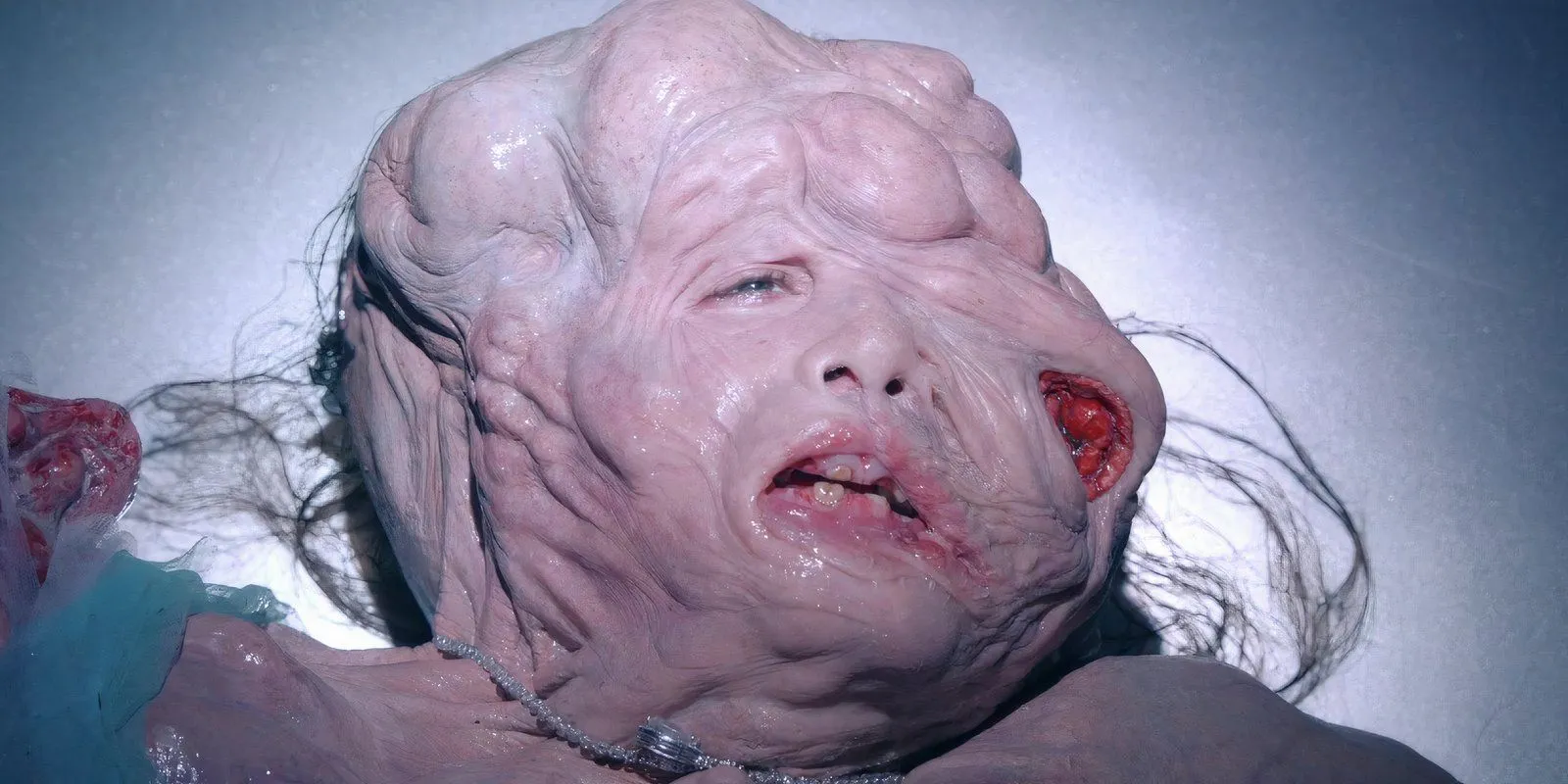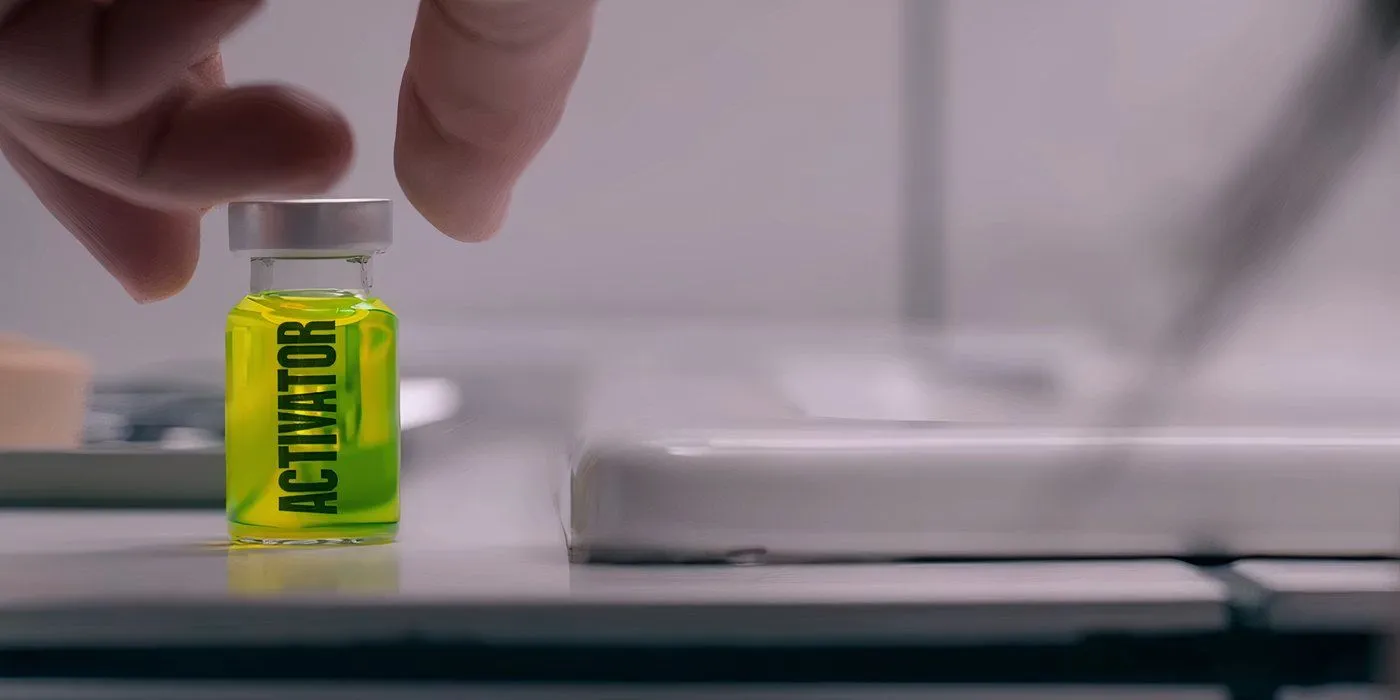
Coralie Fargeat’s enthralling horror film, The Substance, intricately weaves themes of aging, feminism, and the unsettling nature of the beauty industry. Centered around Elisabeth Sparkle, a renowned aerobics instructor whose life spirals into chaos after being exposed to a mysterious serum on her fiftieth birthday, the narrative captivates audiences. As she grapples with her dual identity following the chemical’s transformation, viewers are left pondering profound questions that linger beyond the closing credits. The film has garnered positive acclaim, showcasing Fargeat’s remarkable storytelling prowess.
While The Substance stands firmly on its own without the need for a sequel, ambiguities persist within its narrative. Fargeat skillfully employs the unknown to enhance the film’s allure. Although some elements of the conclusion seem unresolved, the effectiveness of the imagery and metaphorical storytelling leaves a lasting impression.
11 How Can Elisabeth & Sue Be Awake At The Same Time?
The Final Scenes Bring The Entire Process Into Question

The introduction of the titular serum reveals that it offers Elisabeth a rejuvenated body, where she can shift her consciousness every week into the form of Sue. However, this seemingly idyllic arrangement soon reveals a deeper disconnection. Tension escalates as Elisabeth and Sue’s personalities clash over their divergent lifestyles, culminating in Elisabeth’s drastic decision to end Sue’s existence.
Initially, the conflict appears to be a psychological schism borne from Elisabeth’s prolonged embodiment of Sue. Yet, this perspective is turned on its head when Sue awakens during a pivotal moment. This revelation suggests that Sue may not merely be an extension of Elisabeth but a distinct identity altogether, introduced through the serum’s effects. The movie offers no clear explanation for their simultaneous consciousness, yet two plausible theories emerge.
- The first implies that Elisabeth never truly controlled Sue; instead, the serum allowed her to experience Sue’s consciousness from an observer’s standpoint. Rather than transferring her mind, Elisabeth may have absorbed Sue’s memories.
- The alternative theory posits that Sue’s brain developed enough autonomy over time, making her an independent entity at a biological level.
10 Why Do Sue And Elisabeth Have To Swap Every 7 Days?
The Science Behind The Substance Is Incredibly Vague

Viewers are drawn into the enigma of how the serum operates, highlighted by an instructional video that outlines specific rules without explaining their significance. It’s portrayed that failing to switch identities after seven days may lead to dire outcomes, yet the reasoning remains elusive. As Sue begins to overextend her time, The Substance subtly reveals the repercussions of their identity swaps.
For Elisabeth, prolonged transformation results in rapid aging and deterioration, even as she grapples with the essence of her own existence. The concept of time being stolen from her while Sue inhabits her existence suggests a sci-fi trope resonant in themes of clones losing their integrity. Furthermore, Sue relies on Elisabeth to replenish the necessary spinal fluids for her stabilization, further complicating their intertwined lives.
9 Was “You Are One”A Lie?
The Foundational Truth Of The Process May Have Been A Misdirection

Central to the instructional video is the phrase, “remember, you are one,”emphasized as a foundational belief of the serum’s purpose. Nevertheless, pivotal moments in the film suggest a divergence from this assertion. Sue’s encounter with an older man, who alludes to his own alternate self in distinctly separate terms, raises questions about the veracity of the company’s claims about identity.
This inconsistency casts doubt on the company’s narrative, hinting that the essence of the matrix and alternate self may not truly be unified. Rather, the promotional mantra might serve as a means to suppress the identity splits experienced by users. The ambiguity surrounding this concept has led to much debate about questing the nature of self within the film’s context.
8 Does The Substance Cost Money?
Elisabeth Is Never Seen Giving Payment

The film leaves viewers curious about the transaction process for obtaining the serum. Elisabeth’s introduction to the substance occurs in a clandestine setting, raising questions about the business’s operational legitimacy. Although labeled a “client,”she is never depicted exchanging money, thus maintaining an air of mystery. This situation hints at a potential pyramid scheme where recruits might be expected to perpetuate the program’s exclusivity.
7 How Many People Are Using The Substance?
There Are Many Parcels In The Depository

Indications within the film imply that the substance may serve many individuals. Elisabeth’s identification by a number instead of her name suggests a network of clients involved in this program. Altered identities render them nearly indistinguishable from ordinary younger individuals, emphasizing the potential for a broader societal impact.
6 Who Is The Substance’s Supplier?
Their Identity Is Confined To A Voice On The Phone

Throughout The Substance, details concerning the originators of the serum remain elusive. Elisabeth’s interactions provide minimal insight into who supplies these transformative chemicals. The intentional lack of clarity surrounding their identity serves to amplify the film’s mystery while pushing audiences to engage critically with the thematic content and the broader message of the film. By avoiding a distinct antagonist, Fargeat invites viewers to draw their conclusions about culpability and responsibility in the narrative.
5 Why Was There Extra Activator Fluid?
Was It A Mistake On The Company’s End?

A seemingly minor detail that has sparked curiosity is the extra activator fluid received by Elisabeth upon her acceptance of the substance. While all other components are precisely measured, this surplus fluid raises questions about the agency’s competence. Its inclusion may signify either an organizational error or a subtle indicator of the company’s potential awareness of prior hazardous incidents.
4 How Did Elisabeth Survive Giving Birth To Sue?
The Procedure Surely Should Have Killed Her

Notably, the procedural birth of Sue from Elisabeth’s body raises the specter of physical peril. The gory emergence from a wound in Elisabeth’s back is a striking moment, yet it raises the query of her survival against such trauma. Despite the apparent risk to her life during this unconventional birth, she emerges relatively unscathed.
While Elisabeth’s survival is essential for narrative progression, suggesting that the serum possesses underlying healing properties might offer an in-universe explanation. The substance must inherently operate in a manner that ensures the user’s safety post-activation.
3 How Was Elisabeth Selected For The Substance?
Could Anybody Have Been Chosen?

Demi Moore embodies Elisabeth, a compelling protagonist, though the film hints at her selection being circumstantial rather than explicit. Following a serious accident, a doctor introduces her to the substance program. Eventually, Elisabeth’s discontent with her life’s trajectory makes her an ideal candidate for the serum.
Her circumstances — dissatisfaction with her current life, a desire for a youthful appearance to advance her career, and the ability to disappear without raising suspicion — encapsulate the qualities sought by the company behind the serum. This calculated selection process underscores the organization’s strategic approach to finding suitable candidates.
2 Has The Substance Ever Gone Wrong Before?
It’s Unbelievable That Nobody Has Made Elisabeth’s Mistake Before

Speculation arises regarding whether Elisabeth’s fate is unprecedented. Clues woven throughout the film — particularly a representative’s tone during phone calls when Elisabeth reports issues — suggest that previous clients may have experienced similar consequences. They display annoyance rather than surprise, indicating familiarity with the dilemma she faces.
Moreover, the film’s exploration of society’s obsession with youth could imply that Elisabeth’s plight is not unique, rather serving as an allegorical narrative warning about vanity and its consequences. It mirrors the sentiments that many viewers might resonate with, bridging individual experiences with broader societal truths.
1 Why Does Elisabeth’s Face Emerge At The End?
The Decision Completely Changes The Ending

In a shocking finale, after merging with Sue and causing chaos at a New Year’s Eve celebration, Elisabeth’s visage materializes within the monstrous aftermath. This moment holds profound significance, starkly revealing the toll of her aspirations. It encapsulates Elisabeth’s tragic arc, illustrating how her relentless pursuit of beauty ultimately leads to her downfall.
Elisabeth’s face, amidst the grotesque remnants, serves as a poignant conclusion underscoring her transformation into a victim of societal beauty standards and self-competition. Despite the climactic role played by Sue, this revelation solidifies Elisabeth as the heart of the narrative, reminding audiences of the dire warnings against unattainable ideals that The Substance aims to convey, leaving a haunting resonance long after viewing.




Leave a Reply ▼